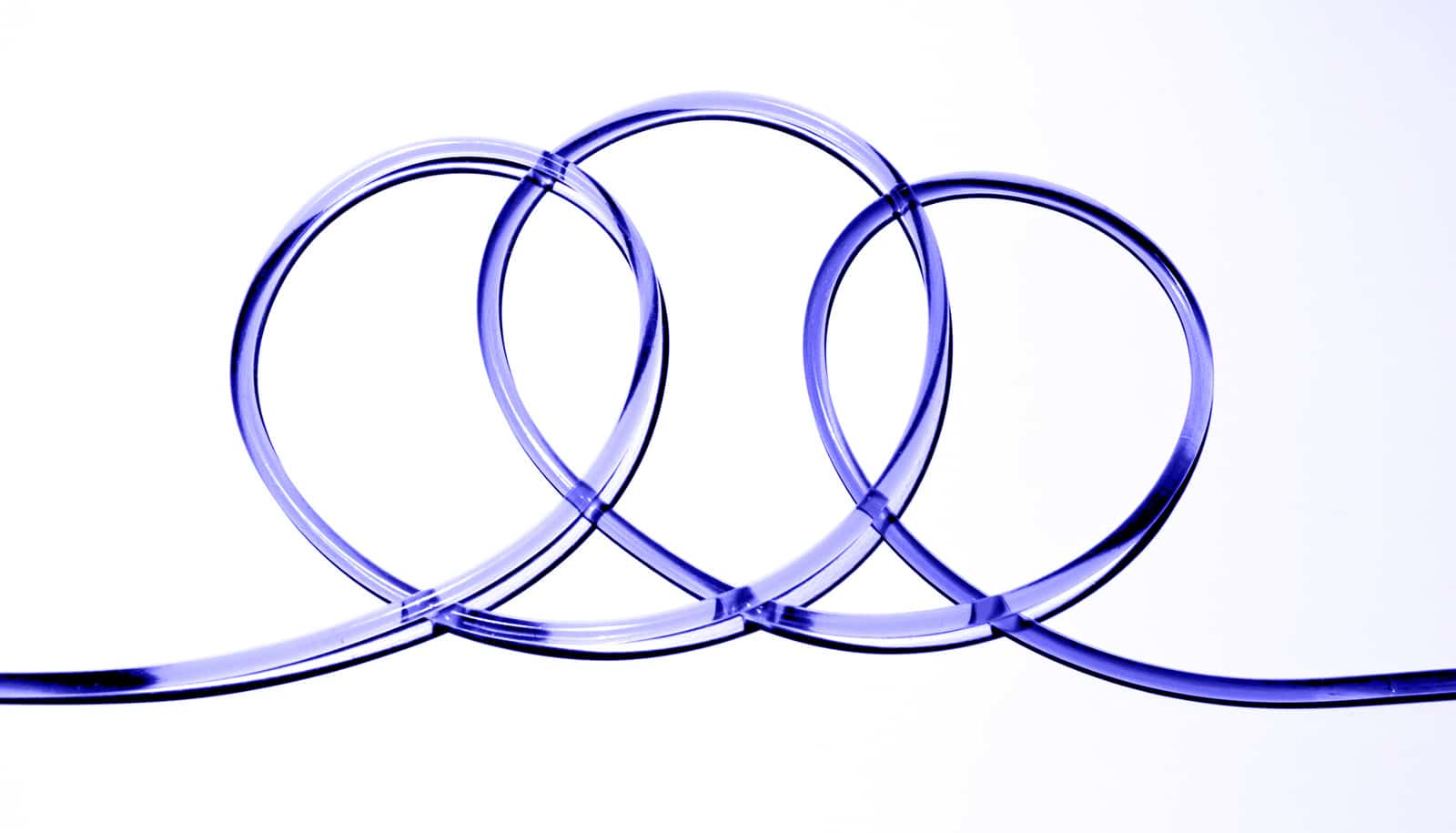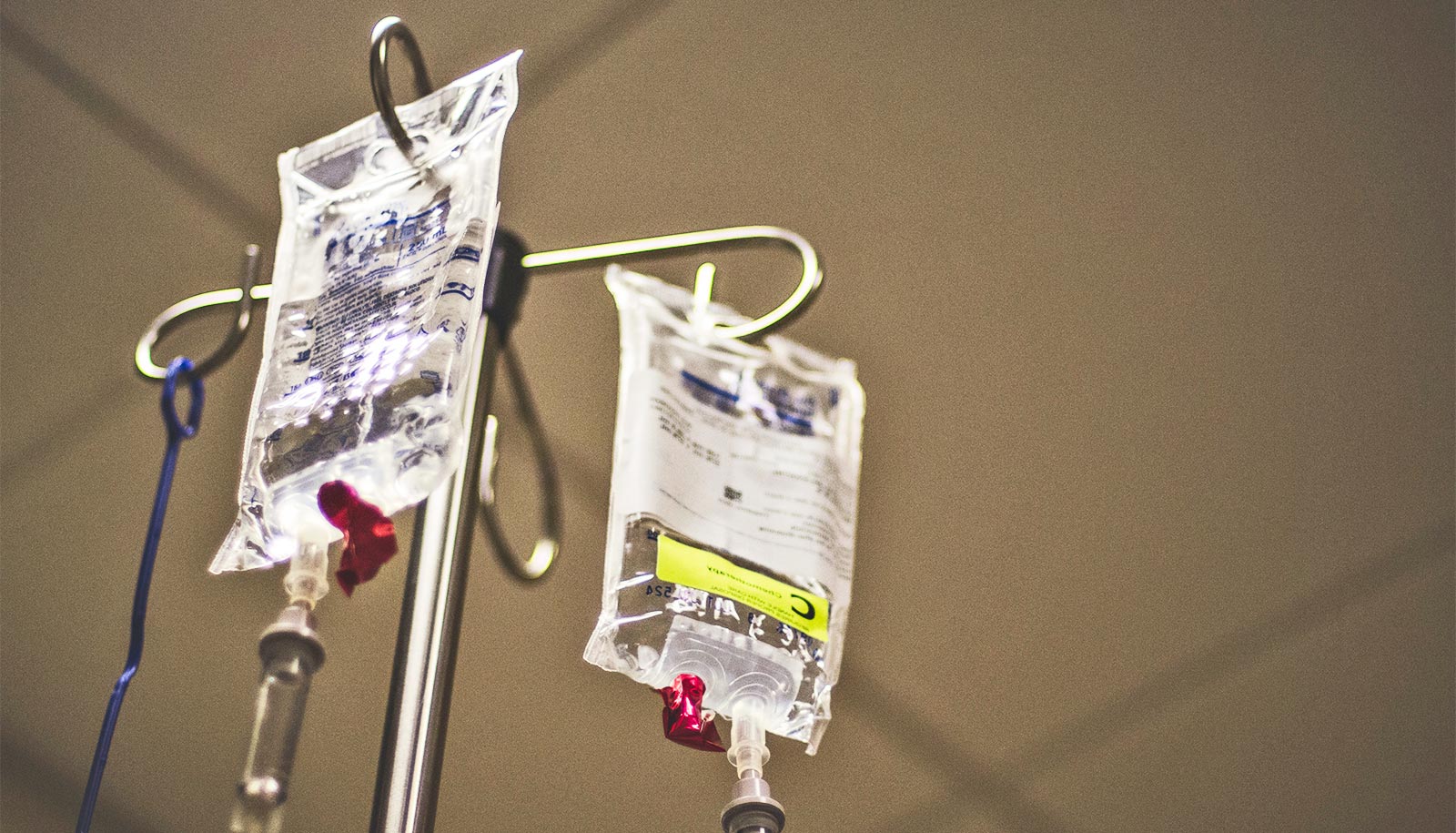Two new endoscopic probes will significantly sharpen imaging resolution and allow direct observation of cells, potentially reducing doctors’ dependence on invasive biopsies, researchers say.
The new probes are already permitting direct observation of fine tissue structures and cell activity in small organs in sheep, rats, and mice. Clinical trials are needed to establish their value in humans.
Endoscopy is a technique in which doctors insert very small instruments into the body to provide close-up images. The new tools “are able to look into organs, such as the bile duct, pancreas, and lungs, giving us a faster and safer way to diagnose a variety of diseases,” says Xingde Li, professor of biomedical engineering at the Johns Hopkins University School of Medicine.
Li’s team developed an advanced miniature two-photon endomicroscope that takes advantage of cells’ native ability to fluoresce, or glow. They have also built an ultrathin optical coherence tomography probe that provides three- to four-times higher resolution than similar technologies in clinical use today.
No dyes
The two-photon instrument makes tissues fluoresce without injected dyes. “Getting label-free images is important, because the chemicals traditionally used to label biopsy samples in a lab could be harmful if used directly inside the human body,” Li says.
Fluorescence is the emission of energy from molecules as their electrons move from an “excited” state back down to their normal energy levels. Just as neon highlighter marks glow under a UV lamp, animal cells can fluoresce and provide real-time information on their activity and function.
Two-photon imaging is the workhorse of laboratory-based imaging for tissue samples; a molecule simultaneously absorbs two photons of light that cause it to fluoresce.
To miniaturize this technology for endoscopy, Li and his team needed to condense the capabilities of a benchtop two-photon microscope into a probe only about 2 millimeters in diameter. “We couldn’t simply shrink the microscope that has dozens of distinct bulky parts, so we started a new design from scratch,” Li says.
The team uses a short-pulsed laser to transmit bursts of photons down a flexible fiber optic cable to the probe. The photons then travel through a miniature lens, which also refocuses fluorescence light from cells and send it back to detectors through the fiber optic cable. The researchers designed the probe to capture 3D images, incorporating a very small scanner.
A major challenge, Li says, was re-collecting fluorescence light from the cells into the same tool that emits the laser pulses. The lens had to be carefully crafted; the fiber optic cord also had to be custom-created.
Because the probe can capture live images within the body, the researchers are able to monitor changes in the metabolic activity of cells, which could indicate cancer, stroke, or heart disease.
A better, cheaper view
The probe can also monitor structural changes in tissue, which could be useful in diagnosing conditions where biopsies are not an option, such as prediction of preterm births. The probe costs less than $1,000 to produce, and cost would drop dramatically with mass production, Li says.
The team’s other new ultrathin endoscopy instrument, for high-resolution optical coherence tomography, uses a light source with a broader spectrum of color.
“The challenge was to focus all those colors onto a single spot without making the image look fuzzy,” Li says. “Cameras do this by using a large lens, but we did not have that luxury.” The improvements included reducing the probe by about half the diameter of those currently in use to about 500 micrometers, about the width of a salt crystal.
To achieve that, the team formed the end of the fiber optic cord into a tiny ball lens made out of silica, which works as well as its larger counterpart. The ball lens is precisely ground and coated with gold to reflect and focus light onto tissue that doctors want to see.
The small probe has improved flexibility, allowing researchers to access small cavities in complex organs—such as airways deep in a sheep’s lungs—with much clearer visualization than a standard OCT instrument.
Li hopes the new probe will reduce dependence on biopsies to diagnose heart disease and cancer. This is especially important, he says, for organs such as the pancreas, which is not only hard to access with current endoscopic probes, but is also dangerous to biopsy.
“Ultimately, we want to be able to get images good enough so that we don’t have to remove tissue from the patient,” Li says.
‘Ultimate’ endoscope as thin as a human hair
The new probe also promises to be less expensive than currently used probes, which run from $800 to $1,000 dollars per probe. Li’s probe has a materials cost of $20–$50. This significant reduction in cost is important for technologies intended for one-time use in humans.
Li and his team hope to begin clinical trials for their OCT and two-photon probes to establish their safety and efficacy in humans.
The projects appear in the journals Light: Science & Applications and Nature Communications. The National Institutes of Health, National Science Foundation, Wallace H. Coulter Foundation, and Hartwell Foundation supported the research.
Source: Johns Hopkins University



